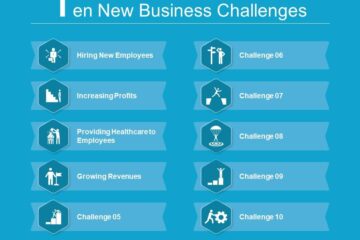In my prior post, Transferring Your Business To Family? First, Create A Written Roadmap, I suggested that successful transfers of family businesses share five critical elements. I’ve discussed the first, which is a written road map that (1) has the parent/owner’s financial security as its ultimate destination and (2) relies on performance benchmarks both to increase cash flow and govern the transfer of business control to a capable successor.
The second critical element is related to the “capable successor”: Unless you have a business that is transferable, the transfer will fail. Three things make a business transferable: a capable successor, a business that is prepared for transfer and an owner ready to let go.
A Capable Successor
I remember when I first started working in my Dad’s store at age 6, making 25 cents an hour. Although I was an overpaid employee, I was not ready to take over the business. Your children are probably more ready to take over the business than I was, but a question remains: How do you assess whether a child is capable of and willing to run and own a business? This assessment is critical, because for a significant amount of time prior to your departure, the child (or children) whom you designate as your successor(s) must demonstrate both the capability and willingness to run the business.
There are two informal indicators of successor readiness: (1) You are willing to take extended vacations without calling the business “just to check up on things,” and (2) when you return, you find that things are just fine.
While this informal test works fairly well in small shops and for short vacations, it is not sufficient for larger companies over longer periods of owner absence. An ability to manage business issues for a week or a month is not the same as driving business growth, anticipating future competition and navigating economic downturns.
Your job as parent/owner includes preparing your child/successor for future responsibilities as you would with any key employee: increase levels of responsibility, provide ongoing education, delegate authority, offer leadership training and develop a plan to transition management responsibilities. Encourage your child to join a peer-to-peer group or take advantage of membership in a regional family-business center. If you aren’t sure how to begin, your advisors can be hugely valuable in creating a program to help you prepare your child for ownership.
TWEET THIS
- Unless you have a business that is transferable, the transfer will fail.
- A business is only transferable if it is capable of going forward without your guidance, leadership and access to your wallet.
In my prior post, Transferring Your Business To Family? First, Create A Written Roadmap, I suggested that successful transfers of family businesses share five critical elements. I’ve discussed the first, which is a written road map that (1) has the parent/owner’s financial security as its ultimate destination and (2) relies on performance benchmarks both to increase cash flow and govern the transfer of business control to a capable successor.
The second critical element is related to the “capable successor”: Unless you have a business that is transferable, the transfer will fail. Three things make a business transferable: a capable successor, a business that is prepared for transfer and an owner ready to let go.
A Capable Successor
I remember when I first started working in my Dad’s store at age 6, making 25 cents an hour. Although I was an overpaid employee, I was not ready to take over the business. Your children are probably more ready to take over the business than I was, but a question remains: How do you assess whether a child is capable of and willing to run and own a business? This assessment is critical, because for a significant amount of time prior to your departure, the child (or children) whom you designate as your successor(s) must demonstrate both the capability and willingness to run the business.
There are two informal indicators of successor readiness: (1) You are willing to take extended vacations without calling the business “just to check up on things,” and (2) when you return, you find that things are just fine.
While this informal test works fairly well in small shops and for short vacations, it is not sufficient for larger companies over longer periods of owner absence. An ability to manage business issues for a week or a month is not the same as driving business growth, anticipating future competition and navigating economic downturns.
Your job as parent/owner includes preparing your child/successor for future responsibilities as you would with any key employee: increase levels of responsibility, provide ongoing education, delegate authority, offer leadership training and develop a plan to transition management responsibilities. Encourage your child to join a peer-to-peer group or take advantage of membership in a regional family-business center. If you aren’t sure how to begin, your advisors can be hugely valuable in creating a program to help you prepare your child for ownership.




